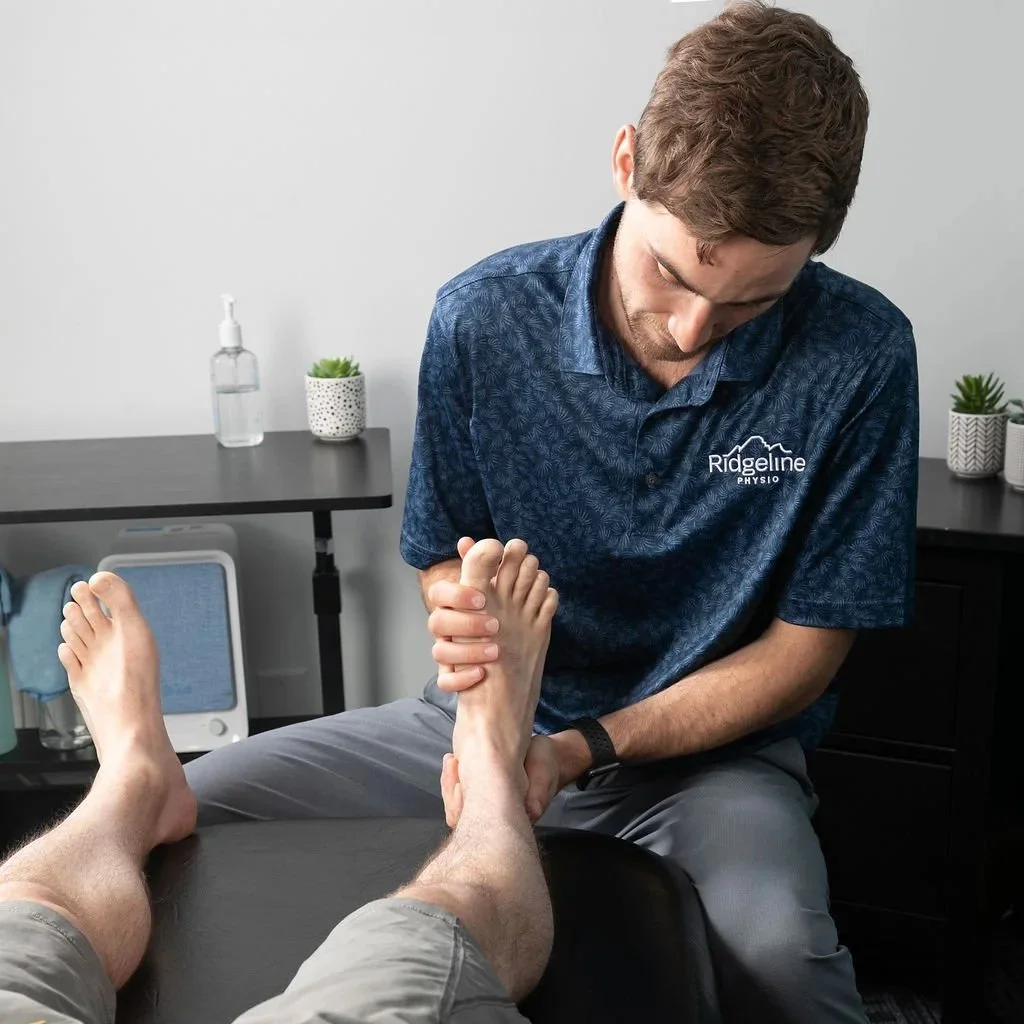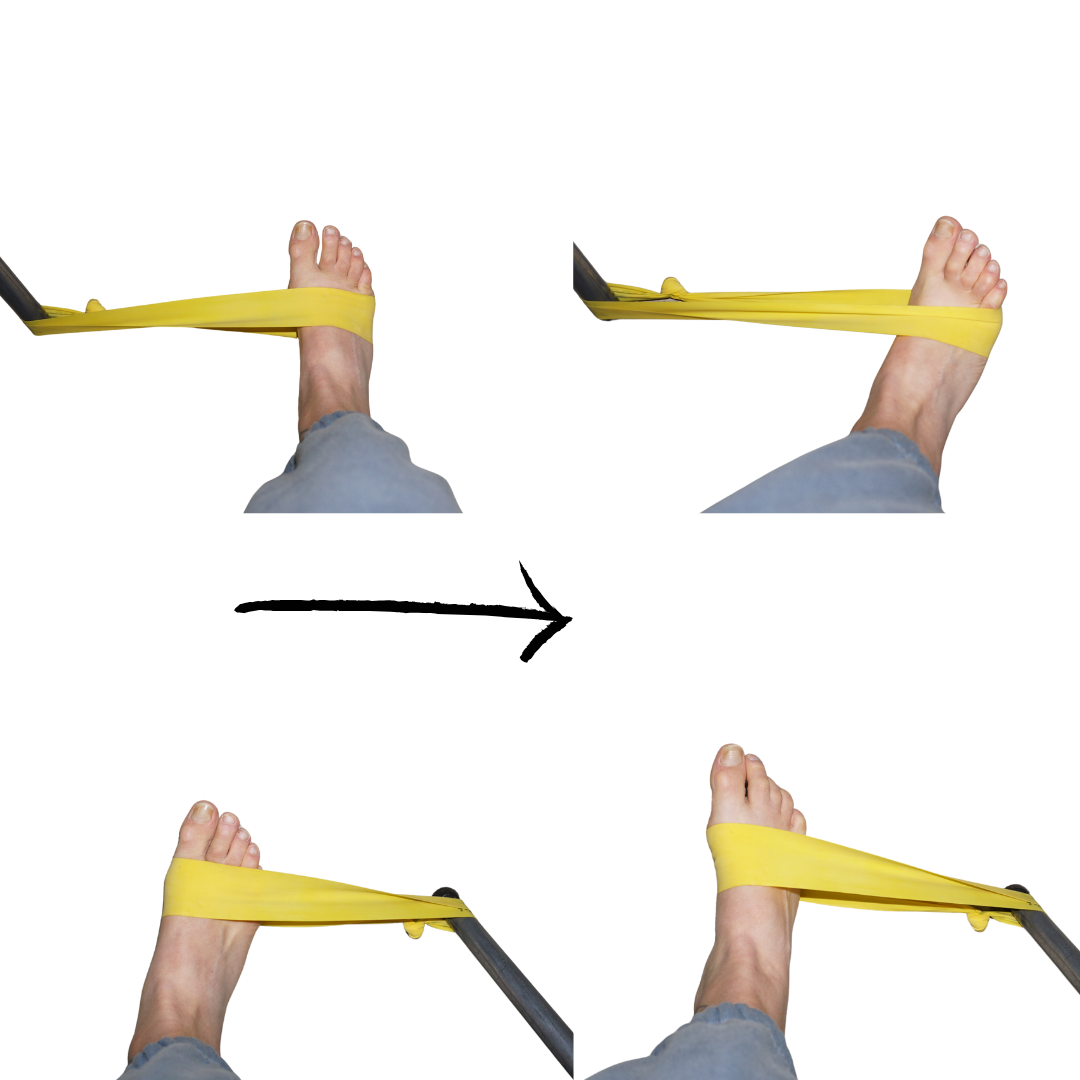Sprained Ankle Treatment with Physiotherapy: What You Need to Know
Our physiotherapist Chris Moses performing an ankle mobility assessment to help diagnose and treat ankle sprains
Ankle sprains are a common injury in Fernie, BC, whether you're out on the trails, playing a sport, or just going about your daily activities a sudden twist can leave you sidelined with a painful ankle injury.
But while sprains can be uncomfortable and frustrating, the good news is that with the right care, most people recover fully and can return to their activities. In this post, we will explore what an ankle sprain is, how it happens, why physiotherapy (PT) is an essential part of the healing process, and give a generalized overview of what recovery/rehabilitation looks like. If you're dealing with an ankle sprain, read on to learn how our physios can get you back on your feet.
Ankle Sprain Explained: What It Is and How It Happens
An ankle sprain is an injury to stabilizing ligaments of the ankle joint. This occurs when they are stretched beyond their normal range of motion resulting in some degree of damage to the tissue.
Ankle sprains are usually caused by a rolling and/or twisting motion of the ankle most commonly injuring the outside (lateral ligaments) but also can occur on the inside (medial ligaments) or on top (anterior ligaments).
Symptoms include a varying degree of pain/swelling in the affected area, bruising, limited range of motion, stiffness, inability to walk/weight bear.
The Importance of Seeing a Physio for Ankle Sprains: Key Benefits
Seeing a physiotherapist for an ankle sprain is important because when not properly treated they can lead to long-term issues. Here are some reasons to see a physiotherapist:
Proper assessment/diagnosis: Physios can assess how severe the sprain is, grading it as a 1, 2, or 3. They can also determine other structures that may have been injured in order to design a specialized rehabilitation plan.
Early mobilization: A physio can guide you through exercises and treatments to safely start moving your ankle early in the recovery process to reduce stiffness, improve circulation, and maintain muscle strength. Improper treatment in the early stages may lead to chronic issues like ankle instability or decreased range of motion resulting in impairment to regular walking can cause a domino effect leading to other injures to the knee, hip, or lower back.
Rehabilitation and strengthening: Physiotherapists will provide a personalized rehab plan, including exercises for strengthening, proprioception (body awareness), balance and flexibility to help the ankle return to normal function.
Pain management: Physios can offer a variety of techniques to manage pain such as manual therapy (like massage or joint mobilization) and taping to help promote faster and complete healing.
Education and prevention of re-injury: Physios educate you on proper body mechanics, stretching, and strengthening routines that can help prevent injuries in the future.
Ankle Sprain Recovery: What to Expect During Physiotherapy Treatment
See below chart for more explanations. Keep in mind this is a generic plan, it is highly recommended to come see your physio and get a full assessment and specialized treatment plan in order to see what else needs to be strengthened.
| Days after injury | Hands on work with your physio |
Peace & love | AROM Exercises |
Stretching | Strength | Balance | Plyometrics/ Agility |
|---|---|---|---|---|---|---|---|
| Acute (days 1-7) | X | X | X | ||||
| Sub-acute (week 1 -12) | X | X | X | X | X | X | |
| Persistent (3 months+) | X | X | X | X | X |
Hands on work with your physio: This one is important from the start of your injury to the end! Combined with your home efforts it is essential to have the help of a professional to get your ankle moving through its full range of motion, beyond what you are physiologically capable of on your own.
Peace & Love (Protection, Elevation, Avoid Anti-Inflammatories, Compression, Education, Load, Optimism, Vascularization and Exercise): A new approach to acute injuries grounded in research that shows how important inflammation is in the healing process. Read more about it in our Peace & Love blog post.
AROM exercises (Active Range of Motion): For example, ankle circles 3 times a day, 20 circles. Make sure you are going through the full range of motion!
Stretching: Stretch your ankle in all directions - left, right, up, down - to the farthest point you can get it. Hold 30 seconds x 2 or 60 seconds x 1, 2-3 times/day. As you heal and can weight your ankle fully, progress to bent knee and straight knee calf raises off a step - calf raise up and then ease down into the strength stretch - 15 times each (straight and bent knee) 2 times/day.
Strength:
Similar to the stretching motion, work your ankle in all directions but add resistance with a band. 10 -15 reps per direction, x3 sets, 1-2 times/day with weight that is just under pain but still challenging. Can continue to progress to harder band colours as you get stronger.
Balance: Some examples to progress through — balance on two feet, two feet closed eyes, one foot, one foot closed eyes, then all the same on an unstable surface, then throwing and catching a ball while balancing. Do it for 30 - 60 seconds throughout the day.
Plyometrics/agility: Plyometrics is jumping of all kinds! One foot, two foot, from a height etc. Agility is running, sprinting, change of directions, fast starts and stops etc. Practice daily.
Review
Ankle sprains are very common and as a result very commonly go untreated. This blog serves as a general overview of the process, taking the time to seek professional is highly recommended in order to get the proper assessment and treatment plan for your own personal journey with recovery.
Please reach out to us via email, phone or book online here to speak to one of our qualified physiotherapists to help get you back on your feet!




